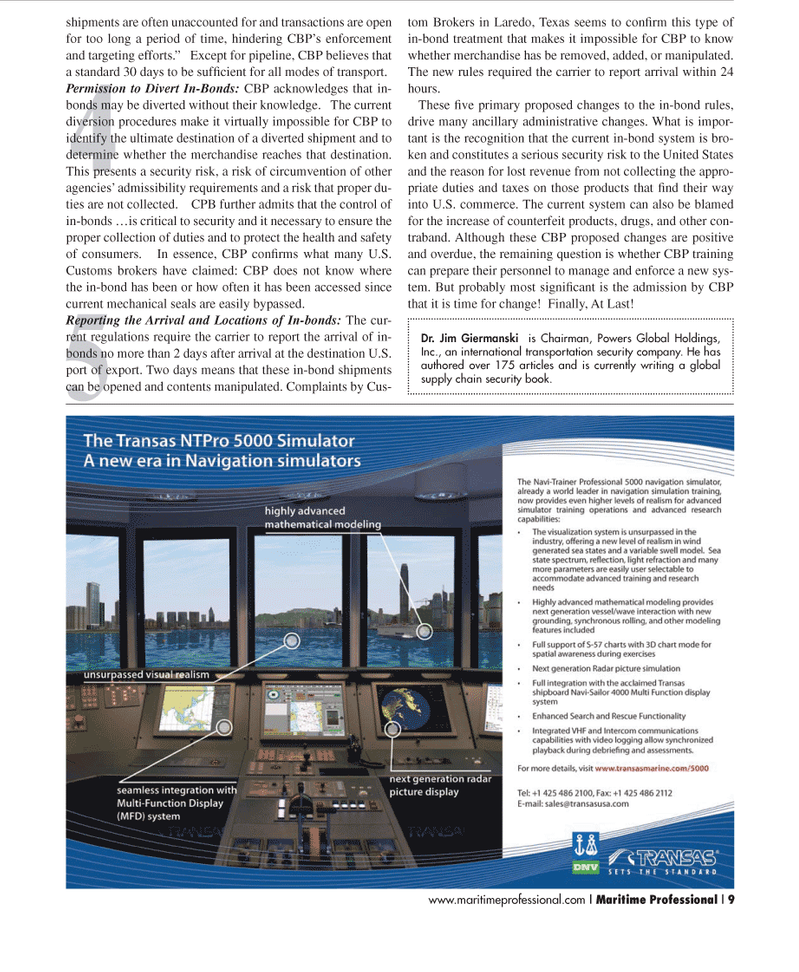
Page 9: of Maritime Logistics Professional Magazine (Q2 2012)
Maritime Risk
Read this page in Pdf, Flash or Html5 edition of Q2 2012 Maritime Logistics Professional Magazine
4 5 shipments are often unaccounted for and transactions are open for too long a period of time, hindering CBP’s enforcement and targeting efforts.” Except for pipeline, CBP believes that a standard 30 days to be suffi cient for all modes of transport.
Permission to Divert In-Bonds: CBP acknowledges that in- bonds may be diverted without their knowledge. The current diversion procedures make it virtually impossible for CBP to identify the ultimate destination of a diverted shipment and to determine whether the merchandise reaches that destination.
This presents a security risk, a risk of circumvention of other agencies’ admissibility requirements and a risk that proper du- ties are not collected. CPB further admits that the control of in-bonds …is critical to security and it necessary to ensure the proper collection of duties and to protect the health and safety of consumers. In essence, CBP confi rms what many U.S.
Customs brokers have claimed: CBP does not know where the in-bond has been or how often it has been accessed since current mechanical seals are easily bypassed.
Reporting the Arrival and Locations of In-bonds: The cur- rent regulations require the carrier to report the arrival of in- bonds no more than 2 days after arrival at the destination U.S. port of export. Two days means that these in-bond shipments can be opened and contents manipulated. Complaints by Cus- tom Brokers in Laredo, Texas seems to confi rm this type of in-bond treatment that makes it impossible for CBP to know whether merchandise has be removed, added, or manipulated.
The new rules required the carrier to report arrival within 24 hours.
These fi ve primary proposed changes to the in-bond rules, drive many ancillary administrative changes. What is impor- tant is the recognition that the current in-bond system is bro- ken and constitutes a serious security risk to the United States and the reason for lost revenue from not collecting the appro- priate duties and taxes on those products that fi nd their way into U.S. commerce. The current system can also be blamed for the increase of counterfeit products, drugs, and other con- traband. Although these CBP proposed changes are positive and overdue, the remaining question is whether CBP training can prepare their personnel to manage and enforce a new sys- tem. But probably most signifi cant is the admission by CBP that it is time for change! Finally, At Last!
Dr. Jim Giermanski is Chairman, Powers Global Holdings,
Inc., an international transportation security company. He has authored over 175 articles and is currently writing a global supply chain security book. www.maritimeprofessional.com | Maritime Professional | 9
MP #2 1-17NEW STYLES.indd 9 5/4/2012 4:51:44 PM

 8
8

 10
10
